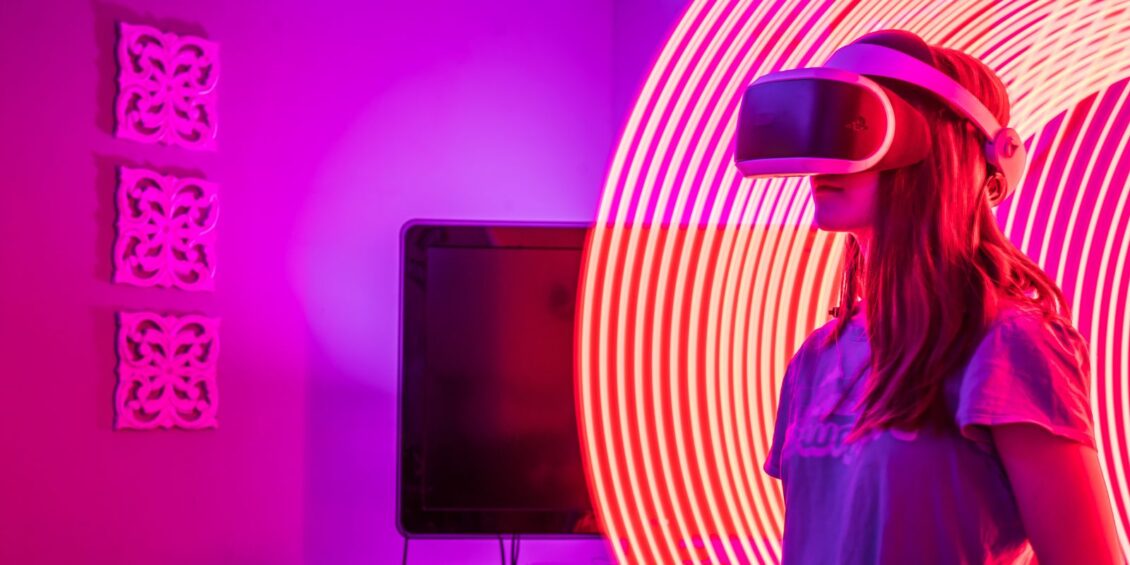Technology surrounds us all in modern life and helps us live in a more convenient and simpler way. It can also transform how we interact with the world and the way we not only work but also stay entertained. Virtual reality is a great example of this around the UK and something everyone around Wales will have heard about.
With its ability to transport users into a hyper-realistic virtual world, this technology is now starting to be applied in many ways. Although you may think this tech is relatively new, it has actually been around for a while and undergone some major developments during its existence.
Today, we look at how it has evolved over time and some of the most popular uses for VR:
VR: From humble origins to more widespread attention
The foundations of virtual reality technology were laid in 1838 when Charles Wheatstone formulated the idea of stereopsis. This concept is based on the fact that the human brain takes the unique two-dimensional images received from each eye and turns them into a three-dimensional image of the world. Stereopsis is the backbone of how VR headsets work and has been pivotal to the formation of this technology.
It was not until 1956 though that Wheatstone’s research was applied to what we now know as virtual reality. It was during this time that cinematographer Morton Heilig invented the ‘Sensorama’ machine to take users into his totally immersive set of short films. Heiling went on to invent the first example of a VR headset in 1960, with a head-mounted display.
The 1960s proved to be a key decade for the evolution of virtual reality, as engineers Comeau and Bryan developed motion-tracking ‘Headsight’ tech in 1961. In 1966, Thomas Furness created the first flight simulator for military use which incorporated VR tech.
Virtual reality in more modern times
During the 1970s, companies began to recognise the potential and widespread applications virtual reality could have. General Electrics produced their own VR flight simulator for training pilots during 1972. Kreuger developed ‘Videoplace’ in 1976, which is credited as being the first-ever interactive virtual reality system.
Interestingly, the term ‘virtual reality’ was not settled on until 1987 and is attributed to Jaron Lanier, the founder of Visual Programming Lab. This was a result of Lanier trying to describe the VR gear his firm was starting to sell.
After continued success in the 1990’s, the hype around VR started to die off a little but interest was reignited in the late 2000s. Further advances in terms of the VR hardware people could use at home coupled with greater affordability meant that sales of VR headsets such as the ‘Oculus Rift’ took off. This was not confined to people using virtual reality for entertainment purposes as the sophistication of modern VR technology also allowed it to become popular in many industries around Wales.
What applications does VR support in modern times?
The truth is that there are many areas in daily life where virtual reality tech is applied to great effect. The Meta VR headset is a good illustration of how advanced VR tech is applied in industries like this and uses a powerful Snapdragon XR2 Gen 2 chipset to deliver a high-level VR experience.
Another example of how VR is applied in contemporary society is the automotive industry. In this major part of the UK business sector, VR is used to help engineers experiment in a virtual, immersive way with the design and features of a vehicle. This means they can put the basic design of the vehicle together before commissioning expensive prototypes.
Healthcare is another UK industry which is not only important for the whole country but also incorporating more VR tech. One good example is surgeons using this technology to practice new procedures without using a real-life patient. With USW’s drive to create’Mediverse’ tech for training medics, we are likely to see more of this as time moves on.
Virtual reality set to thrive in the future
Anyone who follows the world of technology knows that VR has been exciting people for years. Until relatively recently, the hardware which powers it has not really been able to deliver on the hype. Developments in this area alongside a range of new and useful applications for virtual reality looks to have changed all this. The online casino market is a good example of an industry which is looking into implement VR into their live casino experience including and this includes online providers like MGM UK.
Virtual reality holds many possibilities, whether in social, business or healthcare settings. As the technology develops, companies are looking at ways VR can take advantage of this new frontier and create more immersive, adaptive and interactive experiences within virtual reality.









Leave a Reply
View Comments